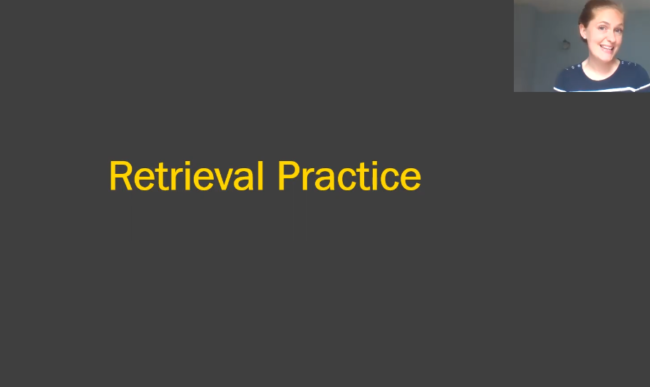04.18.20Video: Retrieval Practice in Asynchronous Instruction

As you can tell from reading this blog, our team has been furiously watching footage of online instruction. We’ve been inspired by the enthusiasm and humility of teachers as they take on sudden new challenges in the name of remote instruction. Last week we watched several teachers doing Retrieval Practice as part of their online lessons. We were struck, first, by how important and valuable Retrieval Practice was as an online activity and also how well it lent itself to asynchronous instruction especially. As a result we decided to test some ideas out ourselves, as Erica Woolway describes in this post:
We’ve been toying over the last week or so with trying to make some sample videos for schools that might be adapting ELA Curriculum in an online setting, so we decided to take some of the best ideas we’d seen in online Retrieval Practice and put them all together in a series of test videos that we watched and discussed internally.
The first one we studied was of Emily Badillo, (you saw her expertly reading aloud a few blog posts ago). This time we asked her to model Retrieval Practice using content from the Knowledge Organizer to our Animal Farm unit. This model is a bit longer than our typical videos (coming in just under 7 minutes) but we think it’s worth a watch because there are so many things to adapt and steal. It focuses on ways we can support students in consolidating knowledge from their working memory into long term memory, something that becomes doubly important in remote learning.
Our favorite aspects of Emily’s model include:
- Emily’s establishment of strong Systems and Routines for remote learning. She is clear about what students should expect and what materials they will need for the session.
- Throughout the video, Emily ‘Dissolves the Screen,’ creating both a feeling of connection as well as accountability for students, despite the fact that she is neither in-person nor doing this synchronously with students.
- She creates a game-like atmosphere, using the timer and countdowns to add a playful urgency to the exercise. We’re really struck by the potential for the game-i-fication of Retrieval Practice in settings like this. We’ve talked about the importance of Pause Points in online instruction, and we love how Emily adapts this idea – keeping the pause points “live” and therefore more a bit more engaging.
- As always, her Retrieval Practice is Knowledge Based. We think that this is particularly important in today’s remote environment. It’s a time when we can’t teach everything, so we find ourselves having to prioritize in a way we’ve never had to before. We think it’s the perfect time to invest in building lasting knowledge that will serve our students in the long run.
- And perhaps what is most challenging in both synchronous and asynchronous instruction, Emily adds an Accountability Loop to this exercise. Not only does she ask students to self-score, but she asks students to text her a picture of their work. A participant on our webinar yesterday chatted a suggestion to take this even a step further – in tomorrow’s lesson she could do a remote Show Call by sharing the strongest student samples.
So it’s with continued gratitude and awe that we continue to learn from you all and try our hand as well.
Thanks to Emily for this model to share with others!
To learn more about the curriculum Emily is using, visit https://teachlikeachampion.org/reading-reconsidered-curriculum.

One Response to “Video: Retrieval Practice in Asynchronous Instruction”